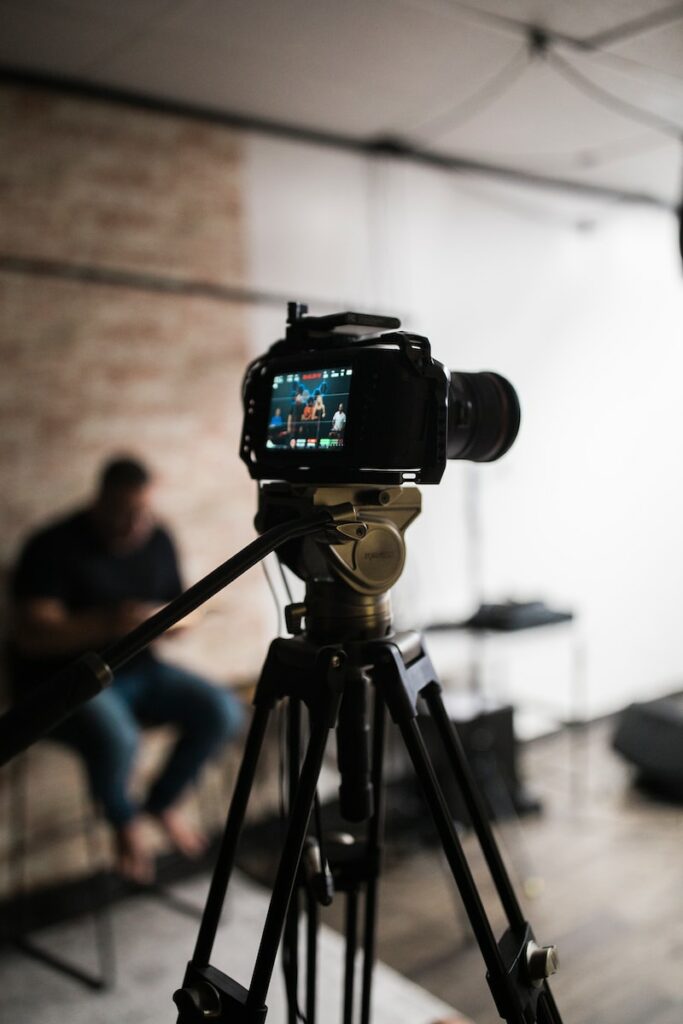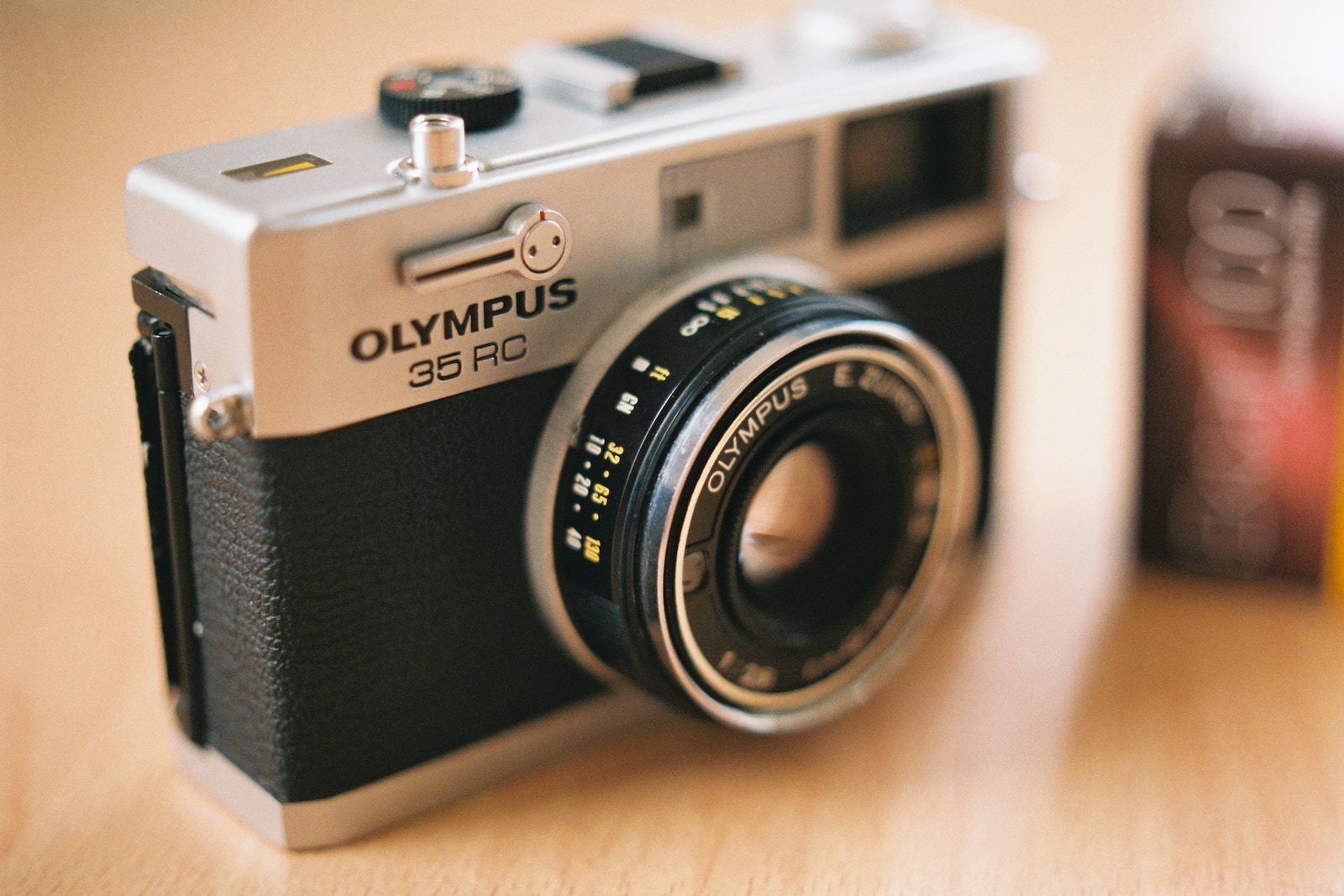Welcome to our captivating blog post that delves into the mesmerizing world of professional video cameras. Prepare to be taken on a technological journey as we uncover the inner workings of these devices, unraveling the secrets behind their ability to deliver unparalleled video performance. Whether you are a videography enthusiast or simply curious about the marvels of modern technology, this insightful post is bound to enhance your understanding of professional video cameras.
Table of Contents
- Overview of Professional Video Cameras
- The Image Sensor: Key to Exceptional Video Quality
- Understanding Video Resolutions and Bit Depth
- The Importance of Optics: Lenses and Sensors
- Mastering the Art of Camera Controls
- The Role of Digital Signal Processing
- The Advancements in Video Recording Formats
- Optical Image Stabilization and Advanced Focus Systems
- Video Assist and Monitoring: Ensuring Optimal Footage
- Connectivity and Integration with External Devices
- The Future of Professional Video Cameras
- Unveiling the Technological Marvel: How Professional Video Cameras Work
- Frequently Asked Questions
- 1. How do professional video cameras work?
- 2. What sets professional video cameras apart from consumer cameras?
- 3. How do professional video cameras deliver superior video performance?
- 4. Can professional video cameras be used by non-professionals?
- 5. What are some popular professional video camera brands?
- 6. Are professional video cameras expensive?
- Wrap Up
Overview of Professional Video Cameras
Before we plunge into the technological aspects, let us first get acquainted with what professional video cameras entail. These cameras are meticulously designed to capture the highest quality footage, catering to the needs of filmmakers, broadcasters, and other professionals in the industry. Ranging from compact handheld camcorders to large-format cinema cameras, professional video cameras offer a myriad of features and capabilities.
The Image Sensor: Key to Exceptional Video Quality
At the heart of every professional video camera lies the image sensor, a crucial component responsible for capturing light and transforming it into digital data. The size and quality of the image sensor greatly impact the camera’s video performance. Larger sensors enable better low-light performance and allow for a shallower depth of field, resulting in that coveted cinematic look.
Understanding Video Resolutions and Bit Depth
When it comes to video quality, resolution and bit depth play a vital role. Higher resolution allows for sharper and more detailed images, while bit depth determines the camera’s ability to capture a wide range of colors and tonal information. Professional video cameras often offer various resolution options, such as 4K or even 8K, catering to the needs of different projects and delivery formats.
The Importance of Optics: Lenses and Sensors
While the image sensor captures the light, it is the lens that determines the quality and characteristics of that light. Professional video cameras are often equipped with interchangeable lenses that allow filmmakers to achieve a desired look and adapt to different shooting situations. The choice of lenses can greatly impact the camera’s video performance, influencing factors like sharpness, bokeh, and overall image quality.
Mastering the Art of Camera Controls
To unleash the full potential of a professional video camera, one must have a good command over its extensive range of manual controls. These controls, including shutter speed, ISO, aperture, and white balance, provide the flexibility and creative freedom necessary to achieve the desired visual style and properly expose the image. A thorough understanding of these controls is essential to harness the camera’s full capabilities.
The Role of Digital Signal Processing
Once the video data is captured by the image sensor, it undergoes a series of digital signal processing (DSP) procedures within the camera. This includes noise reduction, color correction, compression, and various other optimizations. The DSP algorithms employed in professional video cameras are carefully designed to preserve the image quality and enhance the overall video performance.
Did you know that the most expensive professional video camera to date is the ARRI ALEXA 65, with a price tag exceeding $100,000? It is renowned for its exceptional image quality and versatility, making it a favorite among many top-tier filmmakers.
The Advancements in Video Recording Formats
Gone are the days of recording video onto tapes. Professional video cameras now employ various digital recording formats, such as memory cards or solid-state drives (SSD), offering high-speed data transfer rates and ample storage capacities. This shift in recording media has revolutionized the workflow of filmmakers, enabling them to capture longer continuous shots and quickly access the footage for editing.
Optical Image Stabilization and Advanced Focus Systems
Professional video cameras often come equipped with optical image stabilization (OIS) technology, reducing or eliminating unwanted camera movements and vibrations. This feature ensures smooth and stable footage, even in challenging shooting conditions. Additionally, advanced autofocus systems are employed, providing precise and rapid focus tracking, aiding filmmakers in capturing moving subjects with exceptional clarity.
Video Assist and Monitoring: Ensuring Optimal Footage
In the world of professional video cameras, an array of monitoring tools plays a pivotal role in guaranteeing optimal footage. These tools include built-in viewfinders, LCD screens, waveform monitors, and focus peaking. They assist filmmakers in accurately assessing exposure levels, focus accuracy, and color representation, allowing for precise adjustments on the fly.
Connectivity and Integration with External Devices
Professional video cameras are designed to seamlessly integrate with external devices, expanding their capabilities and enhancing the overall workflow. These devices may include external recorders, wireless audio systems, or even drones. The ability to connect and control these devices directly from the camera simplifies the production process and opens up new creative possibilities.
The Future of Professional Video Cameras
As technology continues to advance, professional video cameras are bound to evolve further. We can expect to see improvements in areas such as high dynamic range (HDR) capabilities, higher frame rates, and enhanced connectivity options. The future of professional video cameras looks bright, promising even more revolutionary features and unparalleled video performance.

Unraveling the technological marvel behind professional video cameras sheds light on the intricate details that contribute to their superior video performance. From the image sensor to lenses, camera controls, and digital signal processing, each component plays a crucial role. For those passionate about videography or interested in the realm of technology, understanding the inner workings of professional video cameras expands the possibilities for creative expression and fosters appreciation for the art of capturing stunning visual narratives.
Unveiling the Technological Marvel: How Professional Video Cameras Work
Welcome to our blog post where we will delve into the fascinating world of professional video cameras. In this insightful post, we will shed light on the technological aspects behind these devices and how they deliver exceptional video performance. So, let’s get started on our exploration!
The Anatomy of a Professional Video Camera
Before we delve into the inner workings, let’s first understand the basic components that make up a professional video camera:
- Image Sensor: The heart of any camera, the image sensor captures the light and converts it into an electrical signal, forming the foundation for high-quality video.
- Lens: The lens plays a crucial role in capturing and focusing light onto the image sensor. Professional cameras often feature interchangeable lenses, allowing for greater flexibility and creativity.
- Processor: The processor powers the camera’s functions, handling tasks such as image processing, autofocus, and noise reduction.
- Recording Media: This is where the recorded video is stored. Professional cameras typically support various formats and offer options for both external and internal storage.
- Viewfinder/Display: The viewfinder allows the photographer to compose the shot, while the LCD screen displays a live preview of the footage.
The Technology Behind Superior Video Performance
Now that we understand the components, let’s explore the technical advancements that enable professional video cameras to deliver stunning video performance:
- High Resolution: Professional cameras boast high-resolution sensors that capture every intricate detail in the scene. This results in crisp, sharp footage that truly stands out.
- Wide Dynamic Range: By employing advanced technology, professional cameras can capture a wider range of light intensities. This ensures that both bright and dark areas are well-exposed, preventing overexposure or underexposure.
- Advanced Autofocus: Professional cameras utilize sophisticated autofocus systems that can track subjects with incredible precision. This feature is especially useful for capturing fast-paced action or shooting in challenging conditions.
- Image Stabilization: Video footage can often suffer from shaky or unstable shots. Professional cameras incorporate image stabilization technology, reducing unwanted camera movements to produce smoother, more professional-looking videos.
With all these technological advancements working harmoniously, professional video cameras empower photographers and videographers to capture breathtaking moments with unparalleled clarity and precision.
So, the next time you witness a mesmerizing video, remember the remarkable technology behind it—professional video cameras at their finest.
Frequently Asked Questions
1. How do professional video cameras work?
Professional video cameras utilize advanced technology to capture high-quality video footage. They consist of several components such as an image sensor, lens, and processing unit. The image sensor captures light and converts it into electrical signals, which are then processed to form the final video output.
2. What sets professional video cameras apart from consumer cameras?
Professional video cameras are specifically designed for capturing high-quality video footage in various professional settings. They offer superior image resolution, better low-light performance, and extensive manual controls for enhanced customization.
3. How do professional video cameras deliver superior video performance?
Professional video cameras incorporate advanced features like interchangeable lenses, larger image sensors, and high bitrates to ensure exceptional video performance. These cameras also offer more precise exposure control, professional-grade audio inputs, and the ability to record in broadcast-standard video formats.
4. Can professional video cameras be used by non-professionals?
Although professional video cameras are primarily designed for professionals, they can certainly be used by non-professionals as well. However, they may require a bit more technical knowledge and practice to fully utilize their capabilities.
5. What are some popular professional video camera brands?
Some popular professional video camera brands include Sony, Canon, Panasonic, and Blackmagic Design. These brands are known for their reliability, innovation, and delivering top-notch video performance.
6. Are professional video cameras expensive?
Professional video cameras can vary in price depending on their specifications and features. While some models can be quite expensive, there are also more affordable options available, especially for entry-level professionals or enthusiasts.
Wrap Up
To sum up, professional video cameras are the pinnacle of technology when it comes to capturing high-quality video footage. Through the advanced features and components they boast, these devices are able to deliver exceptional video performance in a variety of settings. With their superior image sensors, precision lenses, and cutting-edge image processing technology, professional video cameras are able to capture nuanced details, vibrant colors, and crisp images, ensuring that every moment is captured with the utmost clarity.
We hope this blog post has shed some light on the intricate workings of these technological marvels and has deepened your understanding of their functionalities. If you have any questions or comments regarding professional video cameras or if there are any specific topics you’d like us to cover in the future, please feel free to leave a comment below. We would love to hear from you and continue the conversation!



